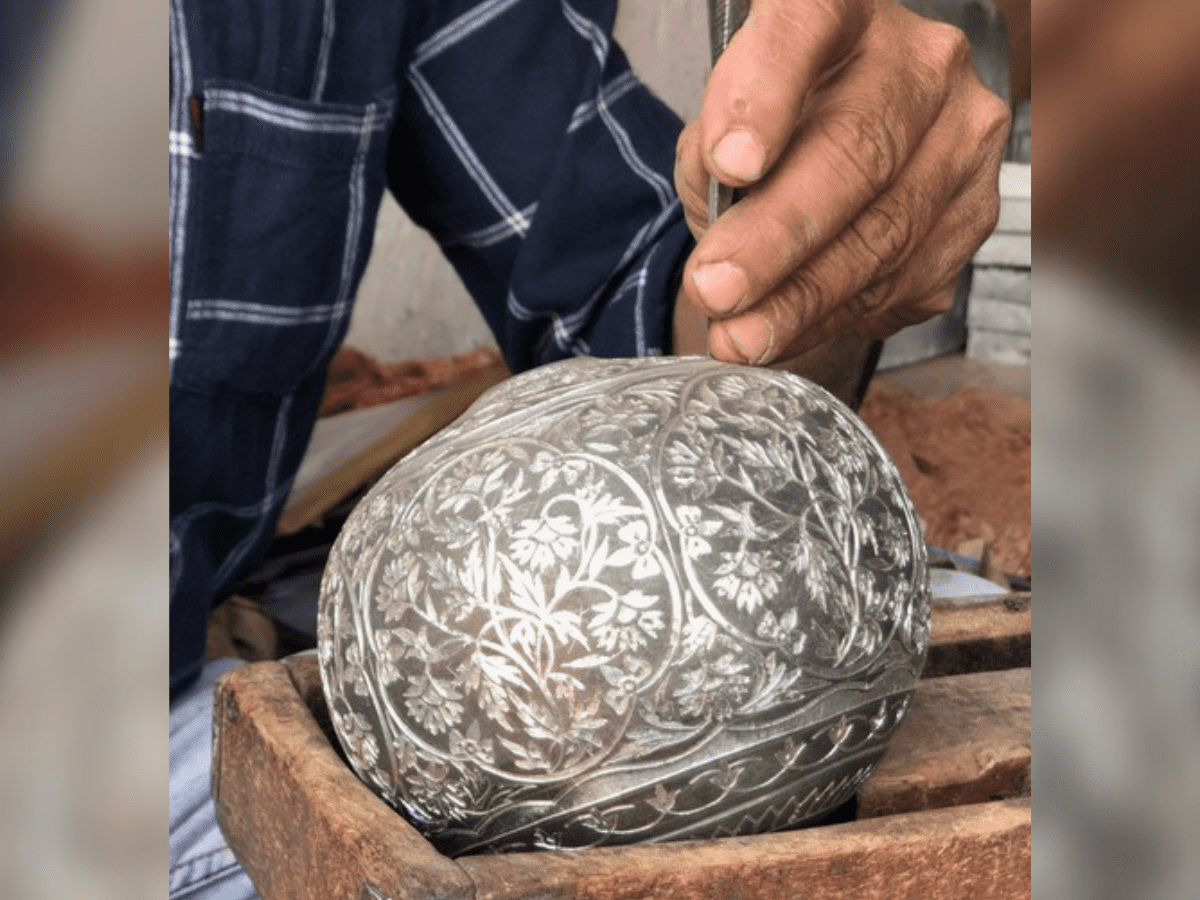
There is an invisible aura around Bidriware. Its hallowed status is enhanced by the pedigree of its evolution in the royal houses across South Asia.
For nearly five hundred years, Bidriware items were must-have pieces among the royalties and nobilities from Mughal emperors, Rajput kings and Bengal Nawabs to Bahmani and Vijayanagara Sultans (yes, the Vijayanagara kings loved to call themselves sultans!).
Even now, when you enter the well-appointed living room of a connoisseur of art, the ‘starkly contrasting black and silver ornament at the corner of the room draws your attention instantly. Its black sheen and delicately encrusted silver floral and vegetal patterns mesmerise the eyes!

With all of the kingdoms and fiefdoms gone, ancient Bidriware items along with the other surviving royal antique pieces are a collector’s treasure now, gracing the leading museums across the world.
Cast in an alloy of copper and zinc, with silver and gold wires or sheets inlaid or overlaid, they are so graceful in their appearance that an indulgent heart longs to feel and touch it, if not wear it!
Although the yearning for wearing it can also be fulfilled now, as the younger generation of Bidri artisans in their desperate attempt to make the craft sellable has repurposed the tradition, crafting some exquisite wearable Bidri items such as earrings, bracelets, cufflinks, necklaces etc. However, the traditional expression of the art form continues to find patrons, even as the newer expressions in wearable forms give the craft a new lease of life.
So, what is the craft’s connection with Bidar?
Though the Bidri metal craft has its origins in medieval Persia, Bidriware in its distinct Indian form took shape in the heart of the early 15th century Bahmani Empire. The Bahmanis were renowned for their exquisite sensibilities for art and architecture, hence it is no surprise that complex and intricate art such as the Bidri metal craft originated in their royal atelier.

But that is not the craft’s only connection to the Bahmani Empire. Its early 15th-century citadel built by Sultan Ahmed Shah Wali Bahman, the sprawling Bidar Fort, has historically had a magical effect on Bidriware. The soil inside the fort still has its alchemy on the art form, giving the Bidriware its distinct blackness.
According to the local craftsmen, the ancient soil of the Bidar Fort has certain properties that when used in a specific mixture of water and a pinch of aluminium fluoride, turns the zinc-copper alloy black, while not having any effect on the inlaid gold or silver.
There is one more thing that the fort soil has its transformative effect on – the spirit of the Bidri artisans.

Having grown up on a steady doze of local legends surrounding the soil, the masters taste the soil to test the distinct composition of the soil – their tongues working as their ancestral guardians of the soil’s authenticity!
However, not many real masters are left in town with the depth of knowledge and the deftness of skills required to be called a master. For every master, there are easily a dozen imposters, who are milking the hype around the craft and making some quick bucks.
Apart from Bidar, Hyderabad is also home to a good number of Bidriware artisans who migrated to the city during the Asaf Jahi period when the Nizams provided patronage to a wide range of art and craft.




